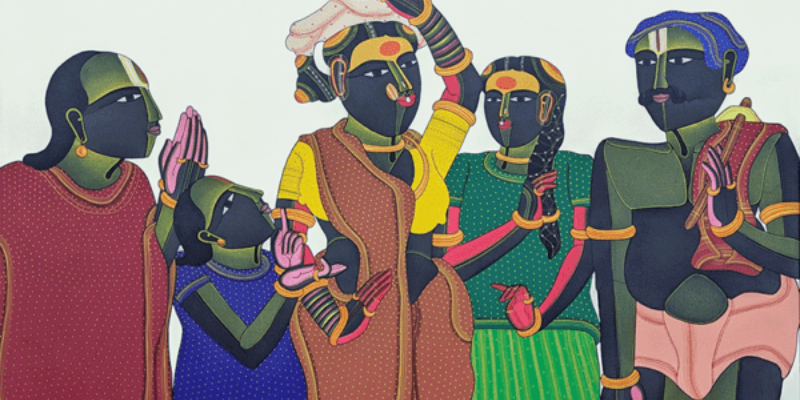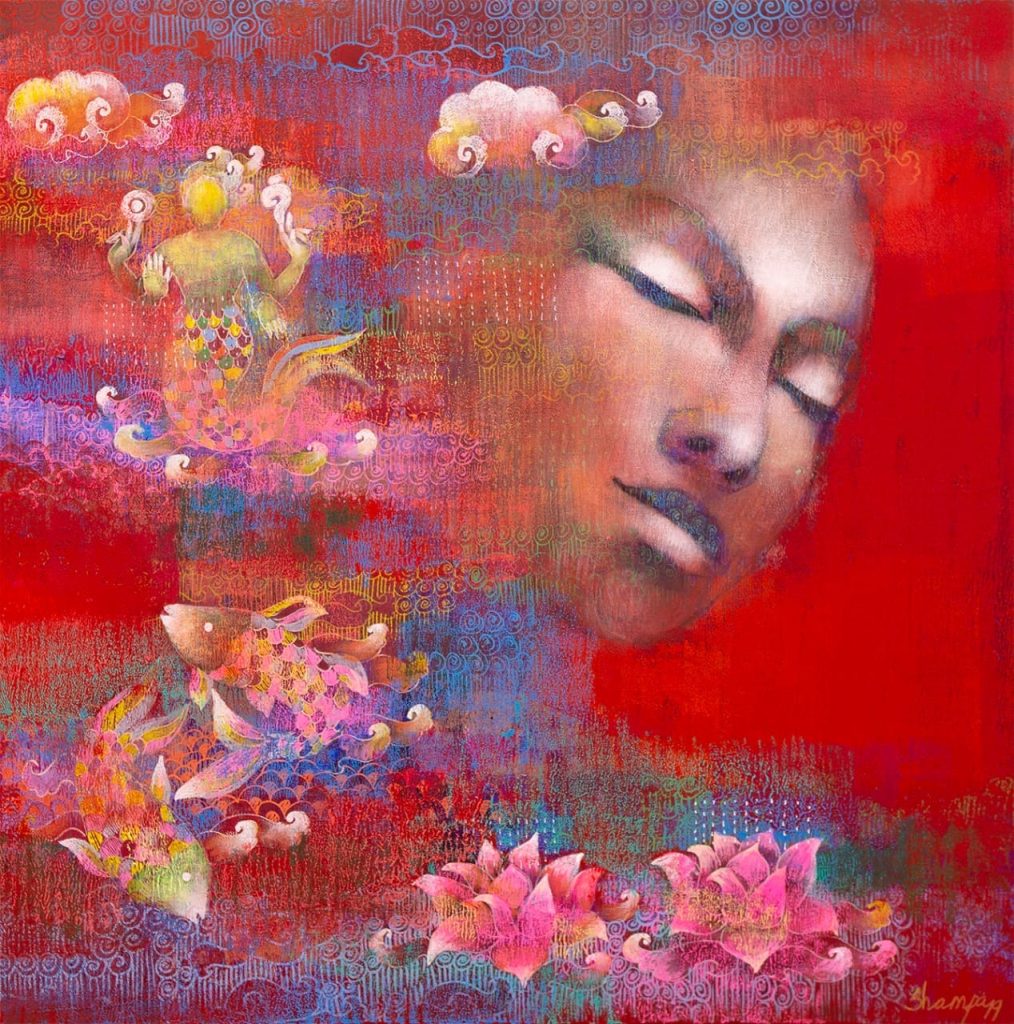Gallerie Nvya brings a completely new experience of two well-established artists whose works not only bridge rural and urban lives but also act as a vehicle to comprehend the unexplored subtle realities of human nature. A new exhibition called, “Bronze & Brushstrokes: Telangana Tales” began recently and critically celebrates the distinguished Indian artists, K. Laxma Goud and Thota Vaikuntam, converging their artistic prowess in a thematic exploration of the region’s cultural tapestry, and capturing the essence of Telangana’s unique cultural identity. With the wide experience of several decades, Goud’s works seem to be effective and highly esthetical, which exposes us to his life’s overall facets that critically celebrate his experiences. His images derive from the strong cultural background that he appreciated and understood from his childhood.
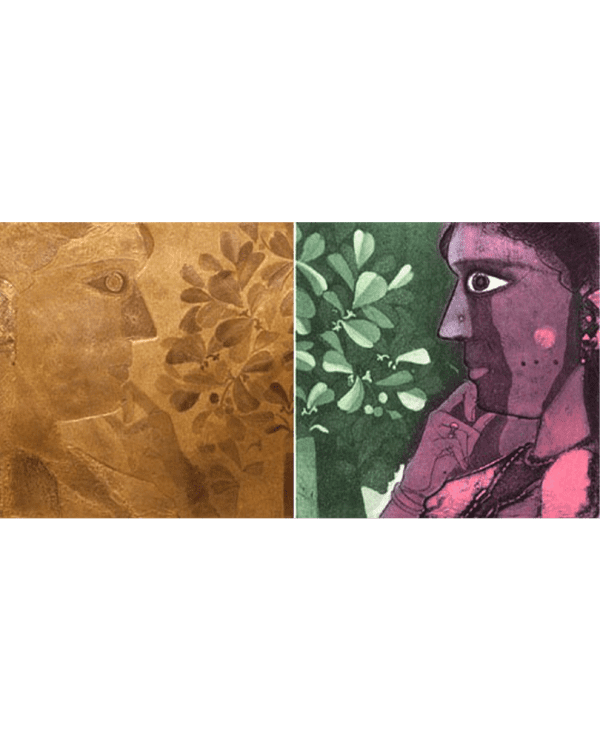
His works possess an essence of rural India, depicting the meticulously drawn life of locals and their traditional values. His serene works create new narratives that are merged intricately with the modern aspects, but his skillful presentation extends beyond the brush he uses for painting to the murals. If I consider the plastic qualities of his works, the tales beautifully come out in the form of strong lines, calculative strokes, and forms that enable him to dissect human characteristics and culture beyond the socio-economic and socio-political barriers. His works offer a wide array of elements that hold one’s attention and create a visually impactful impression that forms an invisible thread that binds the viewer with the traditional and contemporary styles of expression.
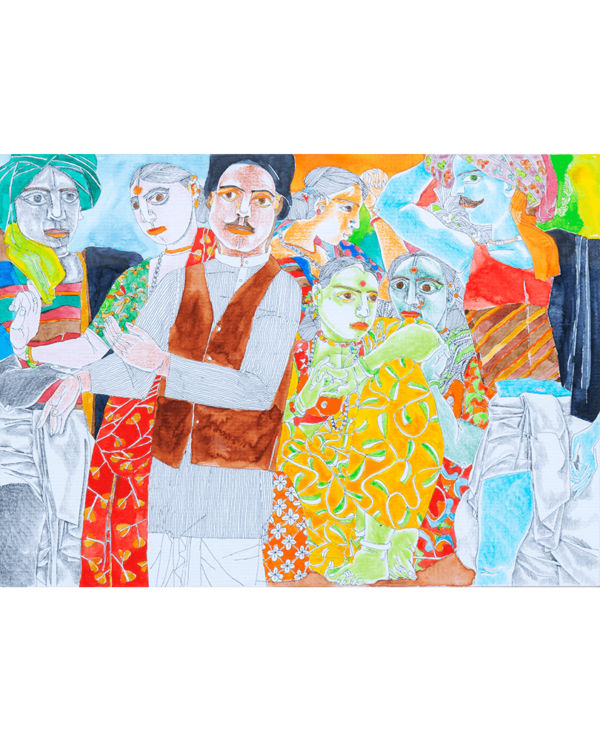
He expressed his views with the gallery, “People think – this is a craft, that is art. I have learned from my own experience of working with intellectual teachers like Prof. K G Subramanyan who doesn’t draw a hard line between craft and art. On the contrary, he says, “What is wrong in being an artisan?” We need to respect our own craft, our textiles, our goldsmith, our blacksmith, our carpentry, our carvings, and our bronze castings’, especially from the South. Look at the Chola bronzes, for example. Why are we not learning from the artisan?”
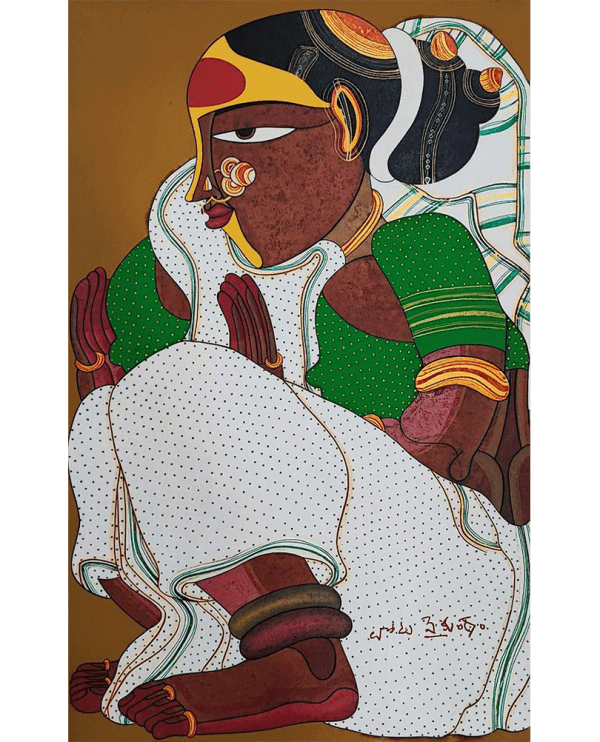
Thota Vaikuntam’s works also engage with the diaspora of rural areas of Telangana and take us into the rich cultural and traditional heritage. His connection with portraying women as the social pillar and decorating them with pride and colorful themes acts as an essential pedigree of the narrative that he is trying to convey. Wearing shiny sarees, decorated with myriad bangles and red bindis, they exhibits the serenity and confidence of Telangana’s women. Men are presented with traditional attire and wearing tilak engaged in musical dialectics with their partners. His style amalgamates the conventional beauty in the contemporary realm that appears and arrives from his hometown. His work creates an in-depth inquiry into motionless motion in all his landscapes, and knits stories of deeply rooted rituals, spirits, and the metaphors associated with them. A few of the awards and accolades bestowed upon the artist include the Bharat Bhavan Biennale Award and the Lalit Kala Akademi’s National Award. With a major presence at Auctions and a strong visibility within India and across the world in innumerable exhibitions, Thota Vaikuntam’s works are a part of prominent Public and Private collections globally.
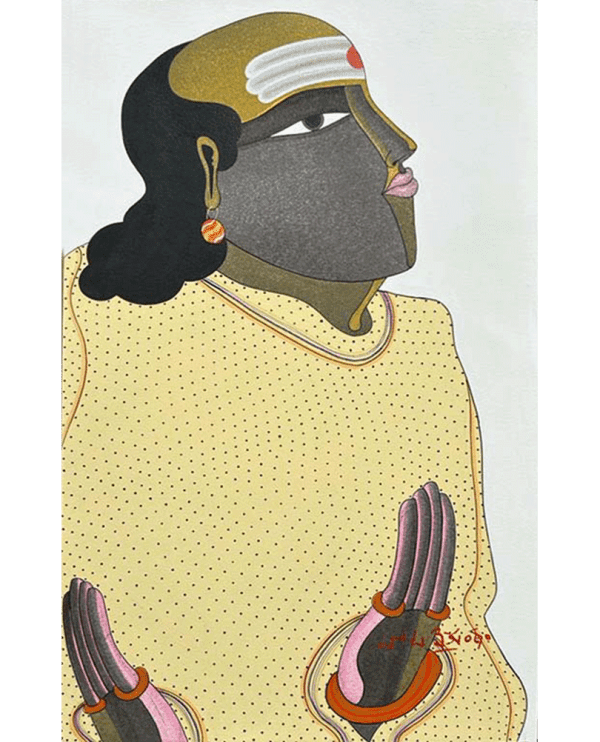
The artist shared his views with the gallery, saying: “When I came back, I realized that the village is my subject and it’s my everything. There is music, there is art, and there are so many colors. I decided that I must bring this culture to the people and to the world. It is slowly growing now. I am trying to represent them through my work, saying this was my land. That’s why my color palette has never changed, because their sense of dressing remained the same but their ideologies grew. Right from the start, I knew that I had to do something different from others. I had to find my own language. That’s why you will find that in the last four decades, especially in the last three, I have been developing it stage by stage. If you see my work from beginning to end, you can see the changes. All the artists change the pattern of the art and change the colors. In my entire career span, I have struggled before and now as well. I want to add new things to my art. I don’t know whether I am successful or not, but there is a change.”
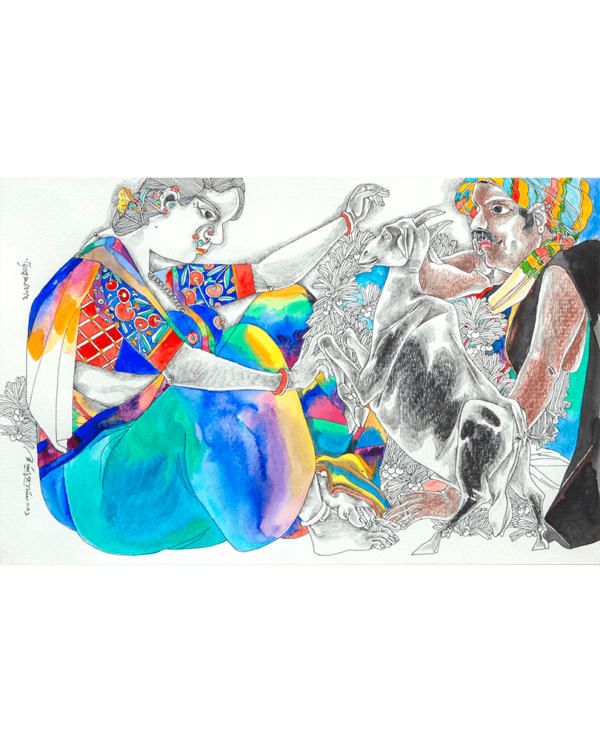
Meher Kalra, the Director of Gallerie Navya shares her views, “Thota Vaikuntam is celebrated for his vibrant portrayals of rural Telangana life, with a particular emphasis on traditional women’s attire. His subjects vividly depict the daily life and rituals of the region, capturing the cultural richness and simplicity of rural existence. Whereas, K. Laxma Goud’s artistic subjects are diverse, ranging from rural life and mythology to human relationships. Known for his versatility, he explores themes through stylized depictions of rural scenes, animals, and intricate portrayals of mythological narratives, reflecting his seamless navigation of various facets of Indian culture and tradition. Thota Vaikuntam and K. Laxma Goud draw inspiration from the cultural and rural heritage of India, despite their distinct styles. Both artists showcase scenes from rural settings, celebrating the essence of Indian culture. This shared emphasis on cultural roots forms a commonality in their artistic expression.”
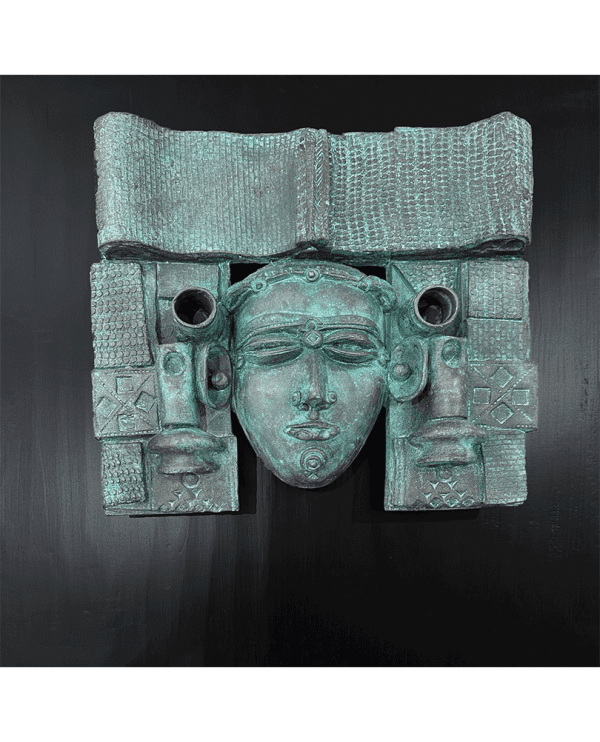
Meher believes that Thota Vaikuntam’s works are vibrant, consisting of realistic depictions of rural Telangana life, often focusing on rural women. In contrast, K. Laxma Goud’s work spans various themes, including rural life, with versatility shown through experiments in different mediums such as sculptures, etchings, gouache, and glass painting. When asked about the significance of this exhibition, she stated, “Exhibiting two master artists from Telangana, both in their early 80s, is highly significant. The visual treat of K. Laxma Goud’s sculptures and paperwork alongside Thota Vaikuntam’s canvas and paper works makes this exhibition unique and appealing to students and collectors. Nvya, meaning new, has consistently championed emerging talents and established masters since its inception in 2004. With its growth to five spaces over 19 years, Nvya provides a platform for both senior and emerging Indian artists, setting itself apart in supporting a diverse range of artistic voices.”
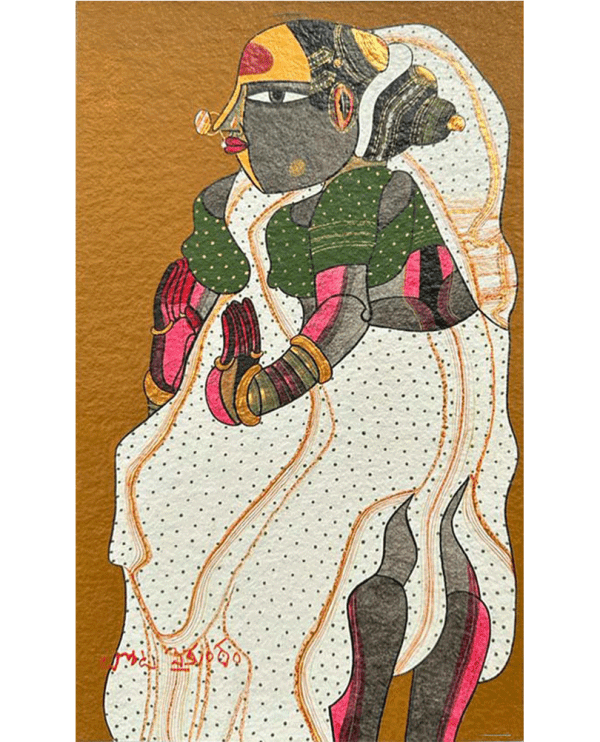
Goud’s works not only define the visual magnificence but also create an intracellular association with the motifs that brilliantly expand its layers for the folk theme and often offer living elements in texture, form, and the subject of his sculptures. I felt a sense of motion in his works as if they are about to invite me to a surreal journey. Vaikuntam’s signature canvas scrutinizes the cultural rural diversity and fabricates a whole new narrative that offers a crucial juncture between contemporary and traditional. It is worth noticing that both the artists reflect upon the less explored region of our country and invite us to ponder what the visual structure and construction of unheard tales of timid history provide a stage for the expression of local folks and their values associated with that land.
Read Also:

